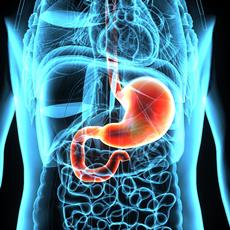
Rectal Bleeding

Summary
Your digestive or gastrointestinal (GI) tract includes the esophagus, stomach, small intestine, large intestine or colon, rectum, and anus. Bleeding can come from any of these areas. The amount of bleeding can be so small that only a lab test can find it.
Signs of bleeding in the digestive tract depend where it is and how much bleeding there is.
Signs of bleeding in the upper digestive tract include:
- Bright red blood in vomit
- Vomit that looks like coffee grounds
- Black or tarry stool
- Dark blood mixed with stool
Signs of bleeding in the lower digestive tract include:
- Black or tarry stool
- Dark blood mixed with stool
- Stool mixed or coated with bright red blood
GI bleeding is not a disease, but a symptom of a disease. There are many possible causes of GI bleeding, including hemorrhoids, peptic ulcers, tears or inflammation in the esophagus, diverticulosis and diverticulitis, ulcerative colitis and Crohn’s disease, colonic polyps, or cancer in the colon, stomach or esophagus.
The test used most often to look for the cause of GI bleeding is called endoscopy. It uses a flexible instrument inserted through the mouth or rectum to view the inside of the GI tract. A type of endoscopy called colonoscopy looks at the large intestine.
NIH: National Institute of Diabetes and Digestive and Kidney Diseases
Source: MedlinePlus, National Library of Medicine.
Information pulled from the Gastrointestinal Bleeding page.
MedlinePlus brings together authoritative health information from the National Library of Medicine (NLM), the National Institutes of Health (NIH), and other government agencies and health-related organizations.
Gastrointestinal (GI) Bleeding
National Institute of Diabetes and Digestive and Kidney Diseases
GI bleeding - series
Medical Encyclopedia
Abdominal Pain (Stomach Pain), Long-Term
American Academy of Family Physicians
Abdominal Pain (Stomach Pain), Short-Term
American Academy of Family Physicians
Capsule Endoscopy
Mayo Foundation for Medical Education and Research
Colonoscopy: MedlinePlus Health Topic
National Library of Medicine
Fecal Occult Blood Test (FOBT)
National Library of Medicine
Lower GI Series (Barium Enema)
National Institute of Diabetes and Digestive and Kidney Diseases
Small Bowel Bleeding
American College of Gastroenterology
Upper GI Endoscopy
National Institute of Diabetes and Digestive and Kidney Diseases
Listen to our
latest Podcast!






